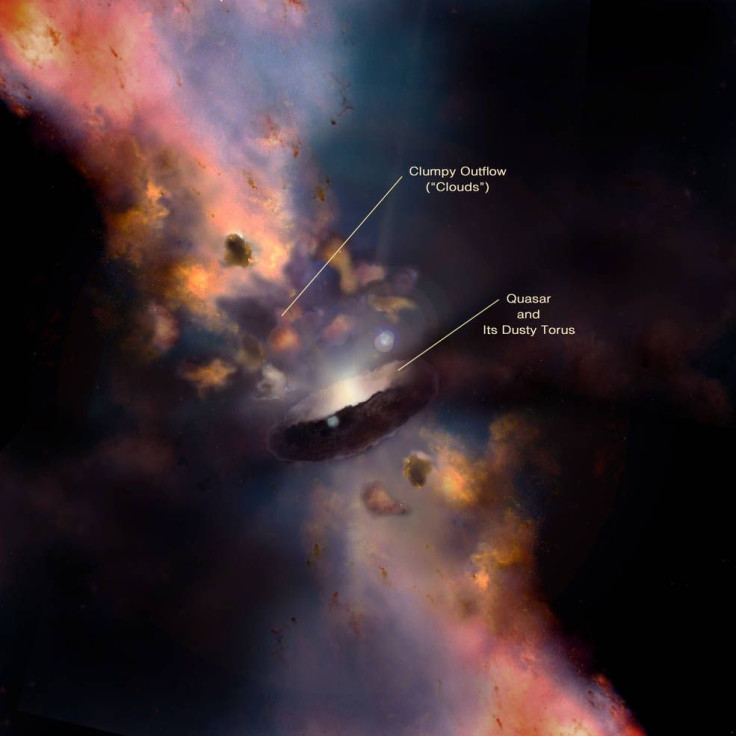Observation Of 'Mirach's Ghost' Sheds Light On Birth Of Supermassive Black Holes

KEY POINTS
- Scientists believe there are two possible methods to how supermassive black holes form
- Smaller supermassive black holes can provide more information on their formation
- A team of scientists studied one of the lowest-mass supermassive black holes ever observed
- They used a new technique that can be valuable for future studies as well
Scientists' observation of a galaxy called "Mirach’s Ghost" is shedding light on the mystery of how supermassive black holes are formed. The team used new techniques that gave them an incredibly close look at the heart of the nearby galaxy.
A supermassive black hole is the largest kind of black hole and can be millions to billions of times the mass of the Sun. Astronomers believe that virtually all galaxies have a supermassive black hole at their center but exactly how they were formed remains unclear.
One possibility is that they were formed in a process called "direct collapse" shortly after the Big Bang, which means they were already massive when they were formed. Another possibility is that they started out just like other black holes, in that they formed as a result of the death of massive stars, starting out small then growing massive over time by feeding on the gas clouds and stars around them.
What makes it difficult for scientists to figure out which method is more likely to be the right one is the fact that most supermassive black holes have already grown so massive since their formation that it's difficult to determine the mass that they started out with.
This is why scientists have long been searching for the smallest supermassive black hole they can find because they will be able to get a much closer look at the origins of the mysterious object before it has consumed as much material as the others have.

In the study, a team of researchers led by Cardiff University scientists, had an uniquely close look at a smaller supermassive black hole. Using the state-of-the-art Atacama Large Millimeter/submillimeter Array (ALMA) telescope in Chile, the researchers zoomed in on the supermassive black hole in the "Mirach's Ghost," which is called so because it is close to the bright star called Mirach. From the Earth, the galaxy looks like a ghostly apparition near the star.
By using brand new techniques, the team was able to observe the gas clouds in the heart of the galaxy, giving them the highest resolution map of gas in another galaxy ever.
Based on the data, the supermassive black hole at the center of Mirach's Ghost is less than 1 million times the mass of the Sun, and likely started out with a mass less than 500,000 times the Sun's mass. This makes it one of the lowest-mass supermassive black holes observed at the center of a nearby galaxy.
"The SMBH in Mirach's Ghost appears to have a mass within the range predicted by 'direct collapse' models. We know it is currently active and swallowing gas, so some of the more extreme 'direct collapse' models that only make very massive SMBHs cannot be true," researcher Timothy Davis of Cardiff University's School of Physics and Astronomy said in a news release. "This on its own is not enough to definitively tell the difference between the 'seed' picture and 'direct collapse' – we need to understand the statistics for that – but this is a massive step in the right direction."
As such, how supermassive black holes formed remains a mystery as the data did not completely prove either theory to be correct, but the study adds valuable insight and also demonstrates a new technique that can greatly contribute to future studies.
"ALMA is poised to contribute significantly to this, both through providing maps of the dynamically important molecular material, and by directly tracing its rotation around the black holes themselves," the researchers wrote.
The study is published in the Monthly notices of the Royal Astronomical Society.
© Copyright IBTimes 2025. All rights reserved.






















